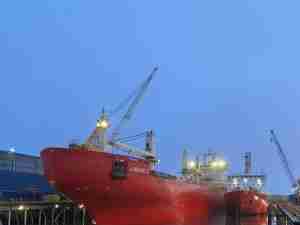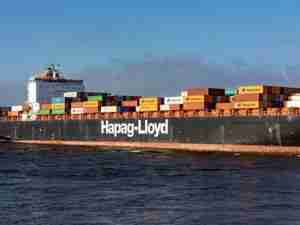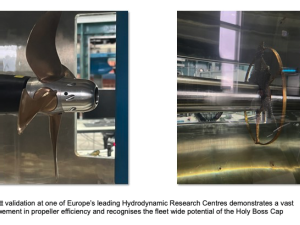Get Used to China Steel as Macquarie Sees It Getting Cheaper
By: Bloomberg News | Dec 23 2015 at 01:07 AM | Maritime
The world needs to get used to cheap Chinese steel, with export prices poised to fall again next year as the world’s biggest producer adjusts to demand that’s dropping for the first time in a generation.
The price of hot-rolled coil, used in everything from fridges to freight containers, may decline about 13 percent next year, Colin Hamilton, Macquarie Group Ltd.’s head of commodities research, said by phone from London. The nation’s steel exports, which have ballooned to more than 100 million metric tons this year, may stay at those levels for the rest of the decade as infrastructure and construction demand continues to falter.
While falling steel prices are partly driven by the collapse in raw materials and lower output costs, “it’s just more to do with the fact the industry was built for demand growth that hasn’t come through,” Hamilton said last week. “We’re past peak steel demand. I think provided there is overcapacity in the Chinese system and given where demand is, it’s going to be like this for some time.”
The flood of Chinese supplies has roiled manufacturers around the world, triggering trade restrictions from India to Europe to the U.S. Continued low prices will pressure steel- making profits worldwide, and may trigger further measures against Chinese exports, according to Anjani Agrawal, global steel leader at Ernst & Young LLP in Mumbai.
China’s hot-rolled coil is a key reference price for the global steel market. The country is the biggest and one of the lowest-cost makers of a product used by manufacturers across the world. Macquarie is forecasting an average price next year of $267.50 a ton, down from $309 a ton in 2015.
Shipments Peak
Other banks, including JPMorgan Chase & Co., have said China’s outbound shipments will peak this year as low prices and trade tensions force Chinese producers to start paring output. China’s crude steel production shrank 2.2 percent to 738.38 million tons in the first 11 months of 2015.
“What may slow down the exports is anti-dumping and protectionist measures that several countries have taken against cheap imports,” said Ernst & Young’s Agrawal. “We’re going to see an impact. More and more countries are raising their objections.”
India plans to step up its protection for debt-laden domestic steelmakers by imposing a minimum price on steel imports among other measures, Steel Secretary Aruna Sundararajan said in an interview this week. The import curbs are necessary to ensure a “level-playing field” for Indian companies after restrictions imposed in September failed to stop a decline in prices, she said.
Steel Tariff
Corrosion-resistant steel imports from China were sold at unfairly low prices and will be taxed at 256 percent, according to a preliminary finding of the U.S. Department of Commerce. The country’s steelmakers including Nucor Corp., U.S. Steel Corp. and Steel Dynamics Inc. filed cases in June alleging that some products from China, India, Italy, South Korea and Taiwan had been dumped in the U.S., harming domestic companies.
Macquarie’s Hamilton said the effect of protectionism on export volumes would be limited because of what he called the “whack-a-mole” effect, where restrictions on one type of product encourage exporters to ship steel in a different form or under a different customs code.
The price of hot-rolled coil assessed by researcher Beijing Antaike Information Development Co. has sunk to $260 a ton, a quarter of its peak before the financial crisis of $1,120 a ton. Asian countries are by far the biggest buyers of Chinese steel, led by South Korea, the destination for about 11.5 percent of China’s exports in the first 10 months of 2015. China’s shipments of aluminum products and diesel fuel, also industries in which it has too much capacity, have also expanded this year.










